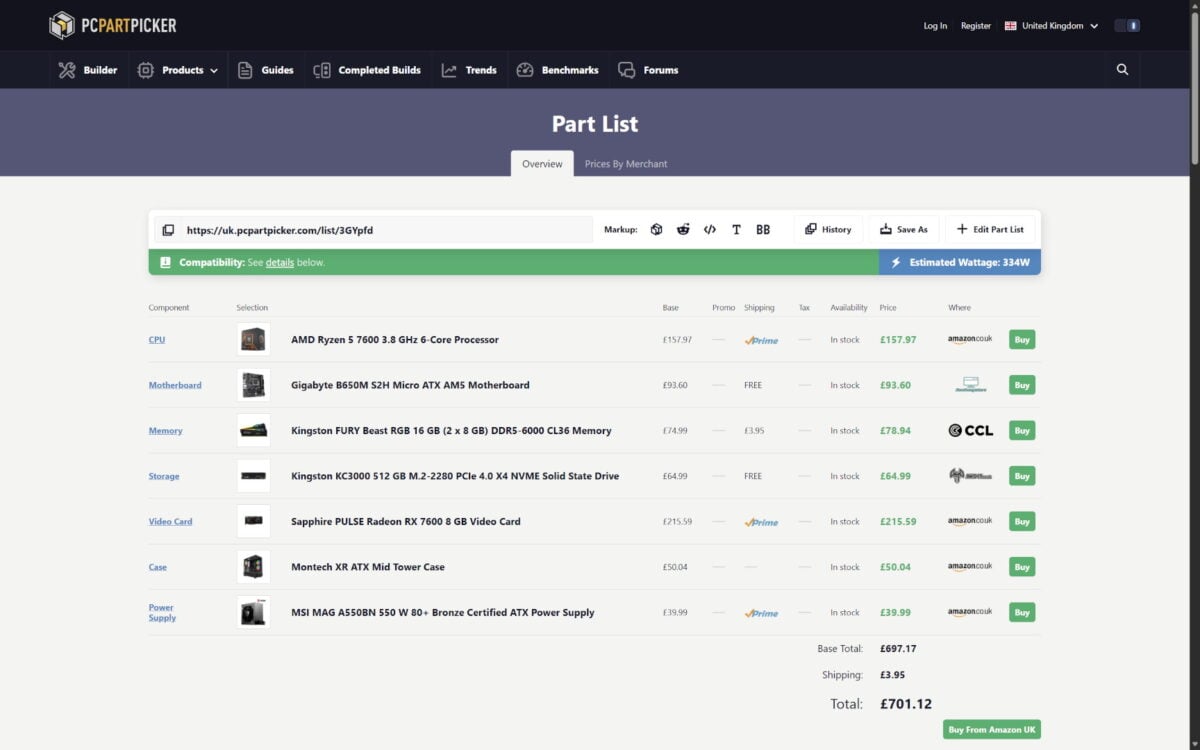I’m still digesting every morsel of information about the Steam Machine, Steam Frame, and Steam Controller, but it’s difficult to properly assess any of these devices without final pricing. While this information undoubtedly won’t come to light until much closer to release, Valve has already given some indication about how much its SteamOS PC will cost.
In a recent interview, IGN asked Valve hardware engineer Yazan Aldehayyat about the Steam Machine’s affordability. They said, “if you’re trying to make a PC that has similar features and similar performance, I think the Steam Machine is going to be a really competitive price to that and provide really good value to it.” Based on this response, I’m keen to explore how much this system may cost using off the shelf parts.
Before diving into comparable components, I must note that Valve is using a semi-custom CPU and GPU inside the Steam Machine, as well as other proprietary parts. I recommend reading Ben’s take on the Steam Machine specs if you’re not already familiar with them. This will make it impossible to build an identical rig, but I’m crafting an informed guess at the price here, rather than predicting the system’s final cost.

Throwing hardware that’s as close to the Steam Machine as possible into PC Part Picker, my final total is £701.12 sans an operating system. Of course, this total doesn’t reflect the bulk purchase price of components that Valve will undoubtedly have paid, or the fact that it will be using its own case, motherboard and so on, but it does give us an indication of the ballpark cost of a similar desktop rig. Here’s hoping the spiralling costs of NAND and DRAM prices haven’t had too much of a negative effect.
A Ryzen 5 7600 takes place of Valve’s semi-custom CPU. This chip is a match in terms of architecture (Zen 4), while also boasting the same number of cores (six) and threads (12). However, this processor’s TDP is much higher at 65W (vs. 30W), and has a slightly higher 5.1GHz boost clock (vs. 4.8GHz).
Meanwhile, the Radeon RX 7600 is the closest desktop graphics card in the RDNA 3 family that can match the Steam Machine’s GPU. However, we’re looking at a difference of four compute units compared to the Steam Machine GPU, as well as a power gap of 55W.
Summarily, these existing parts are more powerful than what Valve is putting inside the Steam Machine. The difference in performance, though, will be unclear until we see the system in action.
£700 is relatively inexpensive for a prebuilt gaming PC in 2025, but the notion of a cheaper Steam Machine is an exciting prospect. However, I don’t believe we’ll see pricing competitive with the likes of the Xbox Series X (£450), PlayStation 5 (£430) nor Switch 2 (£386). Much as Valve aims to provide a console-like experience with the Steam Machine, we’re comparing apples and oranges in terms of product, profit strategy, and manufacturing buying power.
Console manufacturers also usually sell hardware at a loss, with the intention of recouping costs via services and cuts from games sales. Valve already enjoys the latter revenue stream, but there’s no equivalent to Xbox Live etc on which it can fall back.
With this in mind, I think we’ll see the Steam Machine launch for somewhere in the region of £500-600 for the 512GB model, with the 2TB variant likely demanding another £100 out of the gate. Although, Valve could surprise us all with another “painful” (to quote Gabe Newell) price á la Steam Deck.
Although the Steam Machine looks likely to cost more expensive than mainstream consoles, I’m quietly confident it will offer better long-term value. This system will save you cash in the long run, not only as you’re free from the almost-necessity of online services, but becayse games are cheaper too. The Steam library is also enormous, with decades-upon-decades of titles.
Underwhelming as the GPU appears, particularly for a system aiming at 4K/60fps with FSR, I’m cautiously optimistic Valve is on to something worthwhile with this new iteration of Steam Machines. Now, if the company can work with AMD to backport the upscaling goodness of FSR 4 to this system’s RDNA 3 GPU, following in the footsteps of FSR 4 modders, I’ll be far more excited.
For more updates on the Steam Machine and more, make sure to follow the Club386 Google News feed.

